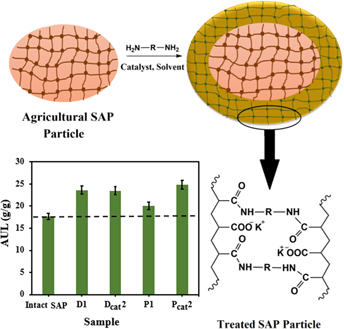Crossref Citations
This article has been cited by the following publications. This list is generated based on data provided by
Crossref.
Amiri, F.
Kabiri, K.
Bouhendi, H.
Abdollahi, H.
Najafi, V.
and
Karami, Z.
2019.
High gel-strength hybrid hydrogels based on modified starch through surface cross-linking technique.
Polymer Bulletin,
Vol. 76,
Issue. 8,
p.
4047.
Dabbaghi, Alaleh
Jahandideh, Arash
Kabiri, Kourosh
Ramazani, Ali
and
Zohuriaan-mehr, Mohammad J.
2019.
Novel Environmentally Friendly Superabsorbent Hydrogel Hybrids from Synthesized Star-Shaped Bio-based Monomers and Acrylic Acid.
Journal of Polymers and the Environment,
Vol. 27,
Issue. 9,
p.
1988.
Mignon, Arn
De Belie, Nele
Dubruel, Peter
and
Van Vlierberghe, Sandra
2019.
Superabsorbent polymers: A review on the characteristics and applications of synthetic, polysaccharide-based, semi-synthetic and ‘smart’ derivatives.
European Polymer Journal,
Vol. 117,
Issue. ,
p.
165.
Ghasri, Mahsa
Bouhendi, Hossein
Kabiri, Kourosh
Zohuriaan-Mehr, Mohammad Jalal
Karami, Zeinab
and
Omidian, Hamid
2019.
Superabsorbent polymers achieved by surface cross linking of poly(sodium acrylate) using microwave method.
Iranian Polymer Journal,
Vol. 28,
Issue. 7,
p.
539.
Karami, Zeinab
Naderi, Parvin
Kabiri, Kourosh
and
Zohuriaan-Mehr, Mohammad Jalal
2020.
Epoxidized and Cyclocarbonated Star-Shaped Macromolecules as Bio-Based Internal and External Crosslinkers for Superabsorbent Polymer Hydrogels.
Journal of Polymers and the Environment,
Vol. 28,
Issue. 6,
p.
1684.
Kim, Jung Soo
Kim, Dong Hyun
and
Lee, Youn Suk
2021.
The Influence of Monomer Composition and Surface-CrossLinking Condition on Biodegradation and Gel Strength of Super Absorbent Polymer.
Polymers,
Vol. 13,
Issue. 4,
p.
663.
Zheng, Yunxiang
Wang, Xiangpeng
Zhang, Chunxiao
and
Zong, Lina
2023.
Synthesis, characterization, and swelling behaviors of chitosan-g-poly (acrylic acid-co-acrylamide) superabsorbent using tetraallylammonium bromine as crosslinker.
Polymer Bulletin,
Vol. 80,
Issue. 4,
p.
4443.
Wang, Jian
Ren, Jiangmeng
Zhu, Yun-Peng
Sun, Xue-Qin
Hu, Peng-Fei
Mu, Xin
and
Zeng, Bu-Bing
2023.
Practical povidone iodine catalyzed transamidation from primary amides and amines.
Tetrahedron Letters,
Vol. 116,
Issue. ,
p.
154312.
Mohammadhashemi, Zohreh
Zohuriaan-Mehr, Mohammad Jalal
and
Jahanmardi, Reza
2023.
Antibacterial activity induction into superabsorbent hydrogel via Schiff-base-metal coordination modification.
Polymer Bulletin,
Vol. 80,
Issue. 7,
p.
8045.
Feng, Wuxiang
Zhang, Katherine
Zohuriaan-Mehr, Mohammad Jalal
Kabiri, Kourosh
and
Jin, Congrui
2024.
Unlocking the application potential of superabsorbent polymers in landfill leachate treatment.
Polymer Testing,
Vol. 138,
Issue. ,
p.
108537.
Mogale, Refilwe
Schutte-Smith, Marietjie
Erasmus, Elizabeth
De Wet, Kantinka
and
Visser, Hendrik G.
2024.
Toward sustainable menstrual health management: focus on super absorbent polymers.
Journal of Materials Science,
Vol. 59,
Issue. 15,
p.
6138.
Wang, Kun
Dong, Kang
Guo, Jinjun
and
Du, Hongjian
2024.
Absorption and Release mechanism of superabsorbent polymers and its impact on shrinkage and durability of internally cured concrete – A review.
Case Studies in Construction Materials,
Vol. 21,
Issue. ,
p.
e03909.
